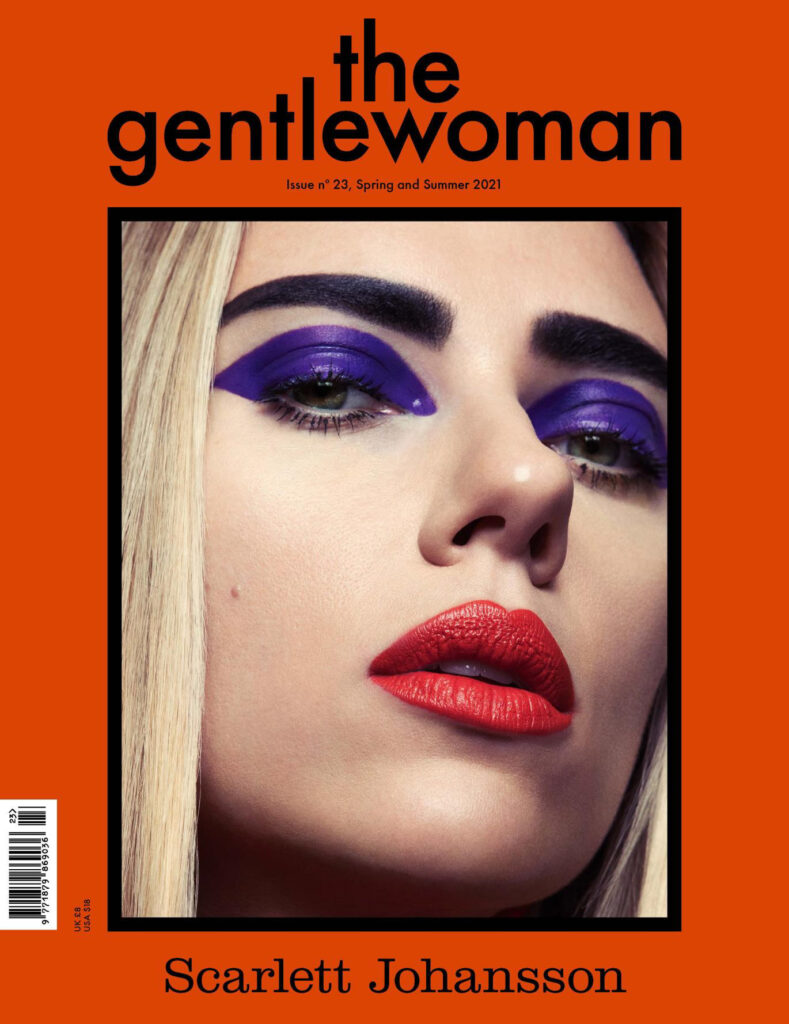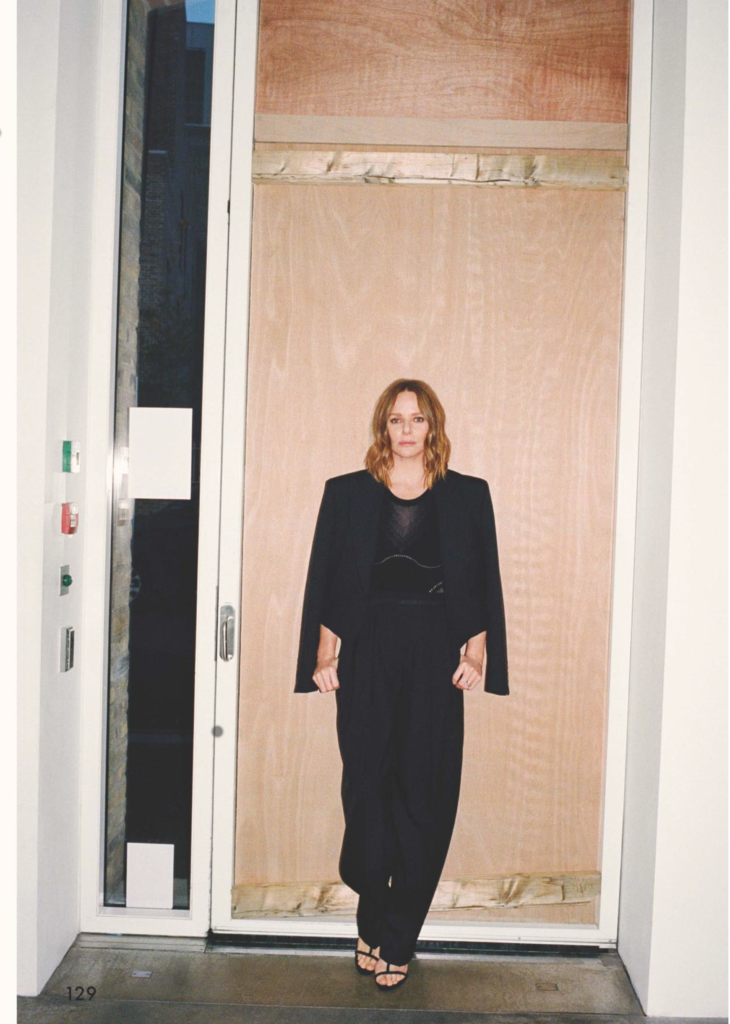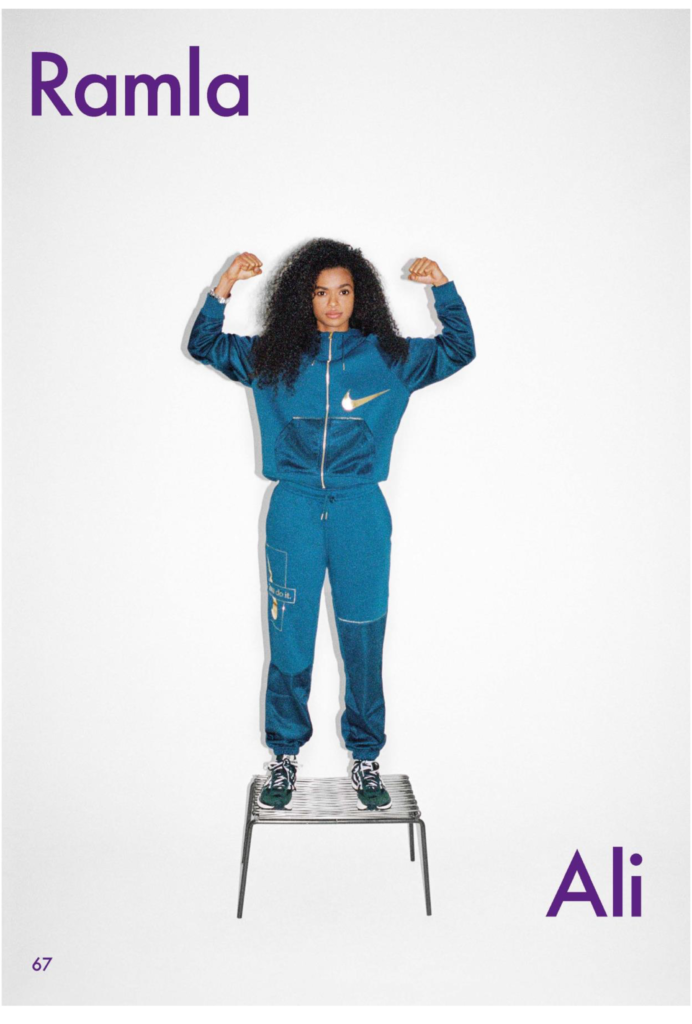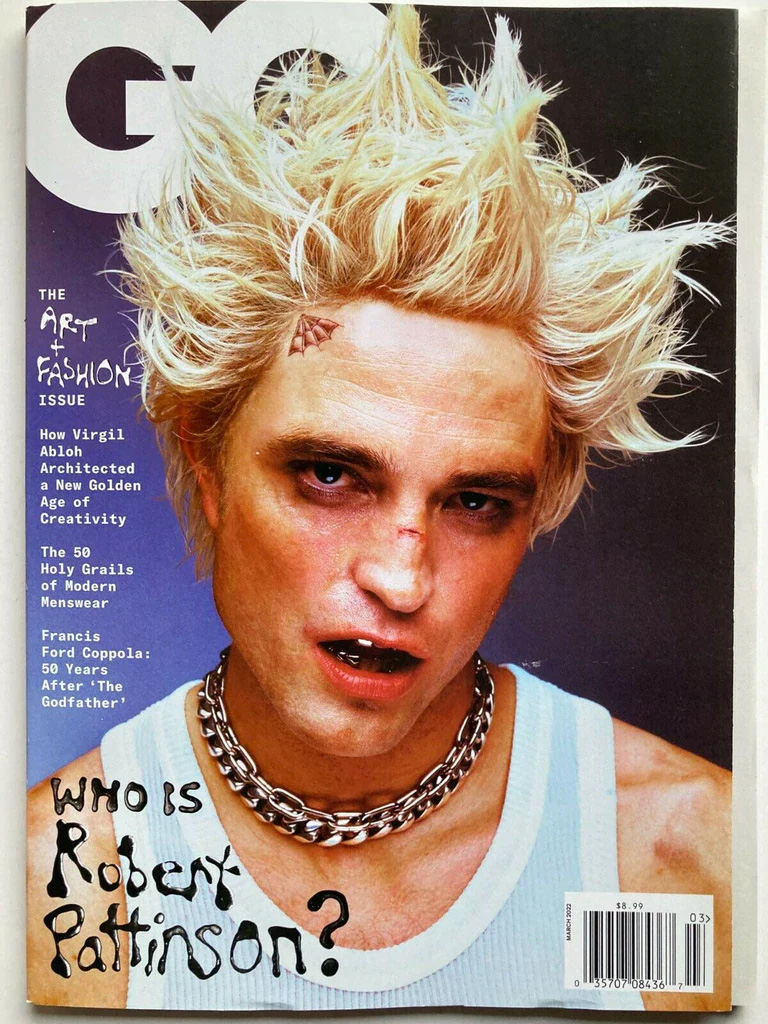Now it is time to work on Representation and Magazines.
A large part of ‘representation’ relates to issues of identity, stereotypes and gender. As we have seen in the media kits both magazines describe their readers in terms of gender — GQ is primarily addressed to male audiences and The Gentlewoman to female ones.
The question then is how is ‘gender’ represented in these magazines? what types of meaning are attached to it? This type of questions have been handled by numerous media theorists and today we will recap the theories of Laura Mulvey whom you have studied before at the beginning of this academic year.
See below two attempts to summarize her views one from The New Yorker
and one from an A Level media studies companion.
Our mission is to connect these ideas with the visual and textual components of your case studies.
In a nutshell, Laura Mulvey drew on psychoanalysis (and more specifically the French theorist Jacques Lacan) to argue that women are represented as objects to be looked at by what ruling ideology of gender understand as the male pleasures of gazing.
Women in classical Hollywood appear sexual, passive, inviting.
Men are the ‘active’ lookers. This very schematic approach to representation has been emblematic but has also been criticized by numerous media theorists (including Laura Mulvey herself).
key terms: male gaze: the dominant way of looking at women as passive objects of sexual pleasure
scopophilia/voyeurism: the pleasure in using another person as an object of sexual stimulation through sight.
Have a reading of theory and then return to the photographs below to explain if the pictures below trigger particular ways of looking on behalf of women and men. Do you think that men or women portayed here are passive objects of voyeuristic pleasure? Or do they propose active ways of self-presentation? Try to justify your opinion by providing evidence (modes of address, styling, attitude).




Answer starter:
Laura Mulvey has argued that women as represented as objects that fulfill men’s pleasures of looking, complying with the so called ‘male gaze.’ This reading had been applied to cinema but also to the visual universe of media industries, including magazines. Women are often presented as sexual, appealing and graceful. Objects to be looked at by ‘male’ active lookers. This view is partially confirmed but also challenged by the aesthetics of the Gentlewoman and the GQ.
The models who appear on the front covers and the inner pages of these magazines might seen as objects of pleausure but at the same time they seem active agents, who exhibit control and inventiveness in the presentation of their gender identity.
For example, in the front cover of Gentle Woman, the close up of Scarlet Johansson could be interpreted as a visual effort to seduce the male viewer. Her direct address, her piercing eyes look at her audience in a hypnotizing way, constructing an atmosphere of sensual and erotic pleasure. However, her posture is not necessarily ‘passive’ and is not directed exclusively to men… [Can you continue this line of thinking in your own words? Discuss how her make up, her facial expression, her accessories, her overall attitude might imply a sense of self-control, an active personality, a person who disrupts conventional ways of understanding how a woman can be looked at? maybe she is presented as an ‘active looker as well?]
The Male Gaze
A guide to this influential film theory which describes how women are reduced to objects for the gaze of the protagonist and male audience.
What is the Male Gaze?
The male gaze refers to the way women are objectified by the camera lens in Hollywood movies because men are in control of the production process and make decisions that appeal to their own values and interests. The audience, including women, are then positioned to accept this narrow representation.Contents
Representation
Laura Mulvey, in “Visual Pleasure and Narrative Cinema”, explored how mainstream films appealed to a “male-gaze” because the industry was dominated by men who, inevitably, constructed representations of women from a masculine point of view.
Most scriptwriters in Hollywood are men. Their narratives usually follow a male protagonist who saves the world and rescues the girl. The studio executives, who are also men, approve the projects and hire male producers to deliver the films. The directors and cinematographers work out how to stage each scene and where to point the camera. Of course, they are also men. Even in post-production, the editors and foley artists are probably men.
Put simply, men decide how women are encoded in the text at each stage of the production.
It is no surprise, therefore, that women are denied realistic representations and are transformed into passive objects to be enjoyed by men. For example, their bodies are often “stylized and fragmented by close-ups” so the audience see more of their curves than their character. By contrast, the male protagonist is “free to command the stage”.
The presence of woman is an indispensable element of spectacle in normal narrative film, yet her visual presence tends to work against the development of the story line.Laura Mulvey
Have a look at representation of Marilyn Monroe in “The River of No Return”. When we cut to the interior, her legs immediately become the dominant signifier of the shot. This is a good example of the way the camera “fragmented” actresses so the audience would focus on their bodies rather than their thoughts and feelings.
Marilyn Monroe In “River Of No Return” – Song “River Of No Return”
Cinema’s appeal to the male gaze is quite clear in this representation of the actress and her role as the showgirl. The feminist critic, bell hooks, also wanted to draw attention to the fact that Marilyn Monroe dyed her hair blonde because beauty was encoded as white in mainstream films.
Finally, Mulvey emphasised how audiences are voyeuristic because they are sitting in the “darkness of the auditorium” but remain separated from the characters on the screen. In this way, the male gaze is evident from the start of the production process to the way the audience actually consume the text.
The Male Gaze and Ideology
Mulvey believed we are “caught” in a “patriarchal order” and that Hollywood “always restricted itself to a formal mise-en-scene reflecting the dominant ideological concept”. In other words, mainstream films tended to reinforce traditional gender roles through their codes and conventions. They also taught women to view themselves through the male gaze.
This creates a false consciousness about how women should think and behave. Albert Bandura called this form of social learning symbolic modelling and David Gauntlett suggested the media helps us to construct our identity. Of course, this feminine ideal is impossible to achieve because characters, such as the dance hall singer played by Marilyn Monroe, are exaggerated versions of reality.
Therefore, the objectification of women for the male gaze is incredibly damaging to young women who might internalise these gender roles. That is why Mulvey concluded women “cannot view the decline of the traditional film form with anything much more than sentimental regret”.
The Male Gaze and other Industries
Laura Mulvey focused her conceptual analysis on classic Hollywood films, but her theory can be applied to other media forms. For example, in advertising, Fowles (1996) said “males gaze and females are gazed at” and Messaris (1997) wrote how “female models addressed to women… appear to imply a male point of view”.
In terms of magazines, Winship (1987) analysed “the gaze” between the “cover model and women readers”. She argued women saw themselves “in the image masculine culture has defined”.
Worked Example – Cosmopolitan Magazine Cover
A lot of students believe the male gaze only objectifies women for the pleasure of the male viewer. However, Mulvey also argued women would see these narrow representations and begin to model their behaviour on those characters. As the cultivation theory suggests, the more we see a particular representation, the more we will believe it is important and true.
Consider this Cosmopolitan cover which follows the typical codes and conventions of the media form. The magazine’s target audience is young and affluent women so it is an important text to analyse. The actress, Zooey Deschanel, is the dominant signifier and the main selling point of this edition. Her direct address pierces the viewer and demands our attention.

Importantly, there are a number of signs which are traditionally labelled as feminine. For instance, the v-cut dress has a polka dot design with frills around the edges. Zooey is wearing costume jewellery, including bracelets, necklaces and earrings. And her body language, long hair and make up are all signifiers with connotations of femininity.
Is this an act of empowered self-representation or, as Janice Winship noted, a representation of femininity that actually appeals to the male gaze because this is how the actress believes she should dress and behave?
We picked this particular issue to explore the male gaze because of Zooey Deschanel’s story: “There’s more to life than pleasing men”. In terms of her acting career, Deschanel has been labelled a manic pixie dream girl. These stereotypical characters are the romantic interest of the male protagonist and are usually reduced to idealised versions of womanhood that appeal to the male gaze. Sadly, in those narratives, the female lead is only there to please a man.
The magazine’s content also seems to reinforce conventional gender roles. For example, the headline “Bikini Heaven” refers to another feminine dress code. The phrase “the one” usually connotes a deeply romantic relationship so it plays on those desires. Of course, there is a story which focuses on body shape and other articles about physical relationships. Finally, the pink colour code used for her name and some of coverlines is considered to be feminine.
In conclusion, the male gaze attempts to explain the impact of narrow representations on the big screen has on young women and the conscious decisions they make about their appearance and behaviour. Mulvey might argue Deschanel’s self-representation is not an act of independence but just another appeal to the male gaze. In this way, the mass media creates a false consciousness and women continue to be mislead and exploited by the patriarchal ideology.
The Female Gaze
Some researchers have argued for the existence of a female gaze where the media text is presented from a female perspective, reflecting the values and attitudes of women, and is targeted at a female audience. These films have a female lead who is an active participant in the narrative rather than being reduced to spectacle.
Perhaps one of the most famous examples of the female gaze is the Diet Coke advert:
Diet Coke ad – “Diet Coke Break” – ’95
Perfetti (2015) worried that some films, such as “Magic Mike” (2012), objectified men in the same way classic Hollywood objectified women. True equality, she argued, will only be achieved when both men and women can move freely between subject and object.

